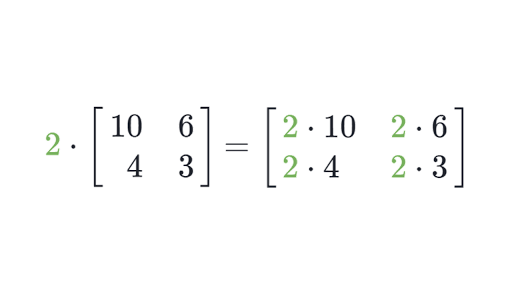Numpy Matrix Multiplication Multiple Matrices
Let us see how to compute matrix multiplication with NumPy. 16 26 19 31.
Multiplying Matrices By Scalars Article Khan Academy
Numpy offers a wide range of functions for performing matrix multiplication.

Numpy matrix multiplication multiple matrices. So lets check out that method in detail. NumPy 3D matrix multiplication. So matrix multiplication of 3D matrices involves multiple multiplications of 2D matrices which eventually boils down to a dot product between their rowcolumn vectors.
Where P is the result of your product and A1 A2 A3 and A4 are the input matrices. If both arguments are 2-D they are multiplied like conventional matrices. And if you have to compute matrix product of two given arraysmatrices then use npmatmul function.
If X is a n X m matrix and Y is a m x 1 matrix then XY is defined and has the dimension n x 1. For numpymatrix objects performs matrix multiplication and elementwise multiplication requires function syntax. This is known as matrix multiplication.
For matrix multiplication the number of columns in the first matrix must be equal to the number of rows in the second matrix. P_im sum_j sum_k sum_l A1_ij A2_jk A3_kl A4_lm. The result matrix has the number of rows of the first and the number of columns of the second matrix.
A 3D matrix is nothing but a collection or a stack of many 2D matrices just like how a 2D matrix is a collectionstack of many 1D vectors. For example for two matrices A and B. Depending on the shapes of the matrices this can speed up the multiplication a lot.
Multiplication of two matrices X and Y is defined only if the number of columns in X is equal to the number of rows Yor else it will lead to an error in the output result. Matrix multiplication is an operation that takes two matrices as input and produces single matrix by multiplying rows of the first matrix to the column of the second matrixIn matrix multiplication make sure that the number of rows of the first matrix should be equal to the number of columns of the second matrix. The first matrix is a stack of three 2D matrices each of shape 32 and the second matrix is a stack of 3 2D matrices each of shape 24.
Think of multi_dot as. In this example we will see a matrix multiplication using numpy arrays using the numpy matmul method. We will be using the numpydot method to find the product of 2 matrices.
The other arguments must be 2-D. NumPy 3D matrix multiplication A 3D matrix is nothing but a collection or a stack of many 2D matrices just like how a 2D matrix is a collectionstack of many 1D vectors. If the last argument is 1-D it is treated as a column vector.
For smaller matrices we may design nested for loops and find the result. For multiplication the number of columns of the first matrix should be equal to the second matrixs number of rows. The matrix multiplication between these two will involve three multiplications between corresponding 2D matrices of A.
So matrix multiplication of 3D matrices involves multiple multiplications of 2D matrices which eventually boils down to a dot product between their rowcolumn vectors. Matrix Multiplication In Mathematics Matrix multiplication is the binary operation on two matrices resulting in the formation of one matrix. A 1 2 2 3 B 4 5 6 7 So AB 14 26 24 36 15 27 25 37 So the computed answer will be.
Writing code using numpymatrix also works fine. NumPy Matrix Multiplication in Python Multiplication of matrix is an operation which produces a single matrix by taking two matrices as input and multiplying rows. Writing code using numpyndarray works fine.
Multi_dot chains numpydot and uses optimal parenthesization of the matrices. The dimensions of the input matrices should be the same. For numpyndarray objects performs elementwise multiplication and matrix multiplication must use a function call numpydot.
If you wish to perform element-wise matrix multiplication then use npmultiply function. To multiply a matrix with another matrix. If the first argument is 1-D it is promoted to a matrix by prepending a 1 to its dimensions.
Multiply the matrices with numpydot matrix_1 matrix_2 method and store the result in a variable. If either argument is N-D N 2 it is treated as a stack of matrices residing in the last two indexes and broadcast accordingly. If the first argument is 1-D it is treated as a row vector.
Note that you sum over exactly those indices that appear twice in the summand namely j k and l.
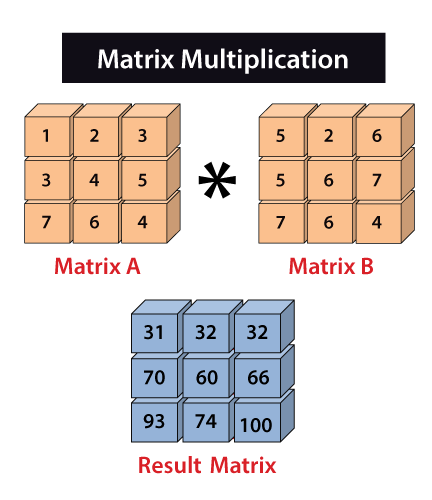
Numpy Matrix Multiplication Javatpoint

Matrix Multiplication In C Applying Transformations To Images

Matrix Multiplication All Types With 10 Examples 3 Matrices Class 12 Youtube
Numpy Matrix Multiplication Numpy V1 17 Manual Updated

C Program Matrix Multiplication Easycodebook Com Matrix Multiplication Multiplication Basic C Programs

Matrix Element Row Column Order Of Matrix Determinant Types Of Matrices Ad Joint Transpose Of Matrix Cbse Math 12th Product Of Matrix Math Multiplication
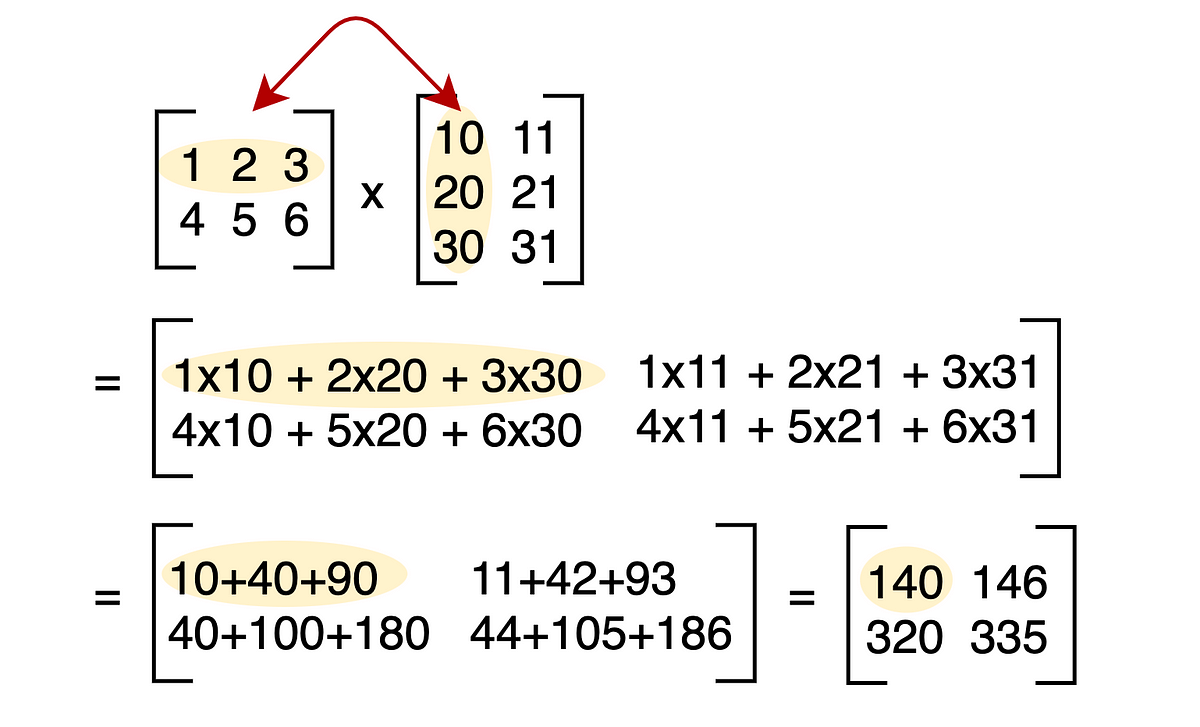
A Complete Beginners Guide To Matrix Multiplication For Data Science With Python Numpy By Chris The Data Guy Towards Data Science

By Element Average Of Multiple Matrices Multiplication Signal Processing Wise

Numpy Matrix Multiplication Journaldev
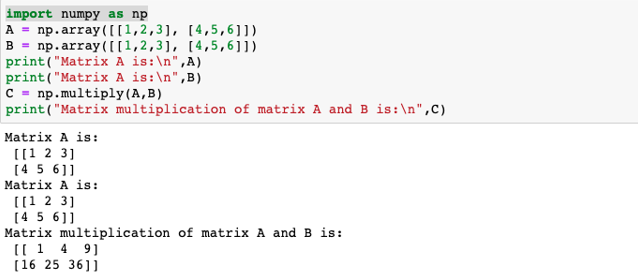
Matrix Multiplication In Numpy Different Types Of Matrix Multiplication

Numpy Matrix Multiplication Journaldev

Perform Matrix Multiplication In Python Codespeedy
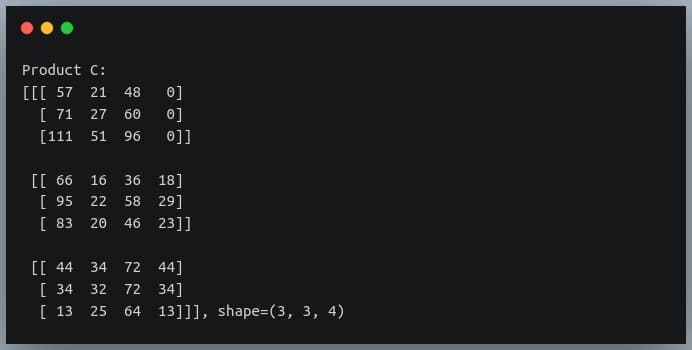
20 Examples For Numpy Matrix Multiplication Like Geeks

Numpy Cheat Sheet Matrix Multiplication Math Operations Multiplying Matrices

Numpy Multiplication Matrix Matrix Matrix Multiplication Inverse Operations
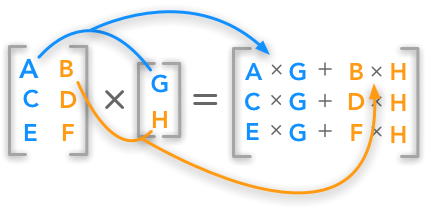
Introduction To Matrices And Vectors Multiplication Using Python Numpy

3 4a Matrix Operations Finite Math
